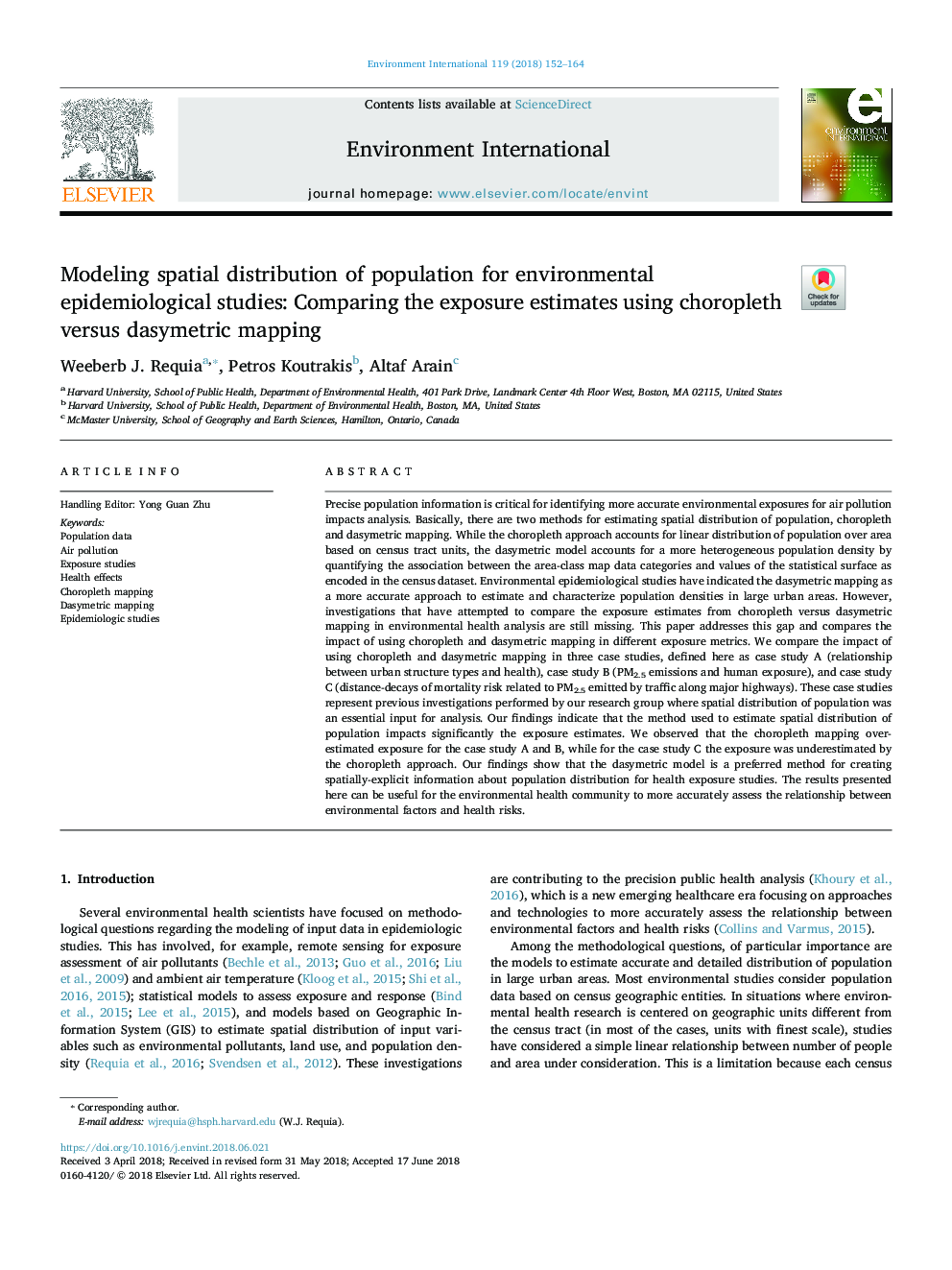| کد مقاله | کد نشریه | سال انتشار | مقاله انگلیسی | نسخه تمام متن |
|---|---|---|---|---|
| 8855048 | 1619011 | 2018 | 13 صفحه PDF | دانلود رایگان |
عنوان انگلیسی مقاله ISI
Modeling spatial distribution of population for environmental epidemiological studies: Comparing the exposure estimates using choropleth versus dasymetric mapping
ترجمه فارسی عنوان
مدل سازی توزیع فضایی جمعیت برای مطالعات اپیدمیولوژیکی محیطی: مقایسه برآوردهای قرار گرفتن با استفاده از نقشه برداری کورپولت در مقابل داسمیتریک
دانلود مقاله + سفارش ترجمه
دانلود مقاله ISI انگلیسی
رایگان برای ایرانیان
کلمات کلیدی
موضوعات مرتبط
علوم زیستی و بیوفناوری
علوم محیط زیست
شیمی زیست محیطی
چکیده انگلیسی
Precise population information is critical for identifying more accurate environmental exposures for air pollution impacts analysis. Basically, there are two methods for estimating spatial distribution of population, choropleth and dasymetric mapping. While the choropleth approach accounts for linear distribution of population over area based on census tract units, the dasymetric model accounts for a more heterogeneous population density by quantifying the association between the area-class map data categories and values of the statistical surface as encoded in the census dataset. Environmental epidemiological studies have indicated the dasymetric mapping as a more accurate approach to estimate and characterize population densities in large urban areas. However, investigations that have attempted to compare the exposure estimates from choropleth versus dasymetric mapping in environmental health analysis are still missing. This paper addresses this gap and compares the impact of using choropleth and dasymetric mapping in different exposure metrics. We compare the impact of using choropleth and dasymetric mapping in three case studies, defined here as case study A (relationship between urban structure types and health), case study B (PM2.5 emissions and human exposure), and case study C (distance-decays of mortality risk related to PM2.5 emitted by traffic along major highways). These case studies represent previous investigations performed by our research group where spatial distribution of population was an essential input for analysis. Our findings indicate that the method used to estimate spatial distribution of population impacts significantly the exposure estimates. We observed that the choropleth mapping overestimated exposure for the case study A and B, while for the case study C the exposure was underestimated by the choropleth approach. Our findings show that the dasymetric model is a preferred method for creating spatially-explicit information about population distribution for health exposure studies. The results presented here can be useful for the environmental health community to more accurately assess the relationship between environmental factors and health risks.
ناشر
Database: Elsevier - ScienceDirect (ساینس دایرکت)
Journal: Environment International - Volume 119, October 2018, Pages 152-164
Journal: Environment International - Volume 119, October 2018, Pages 152-164
نویسندگان
Weeberb J. Requia, Petros Koutrakis, Altaf Arain,
